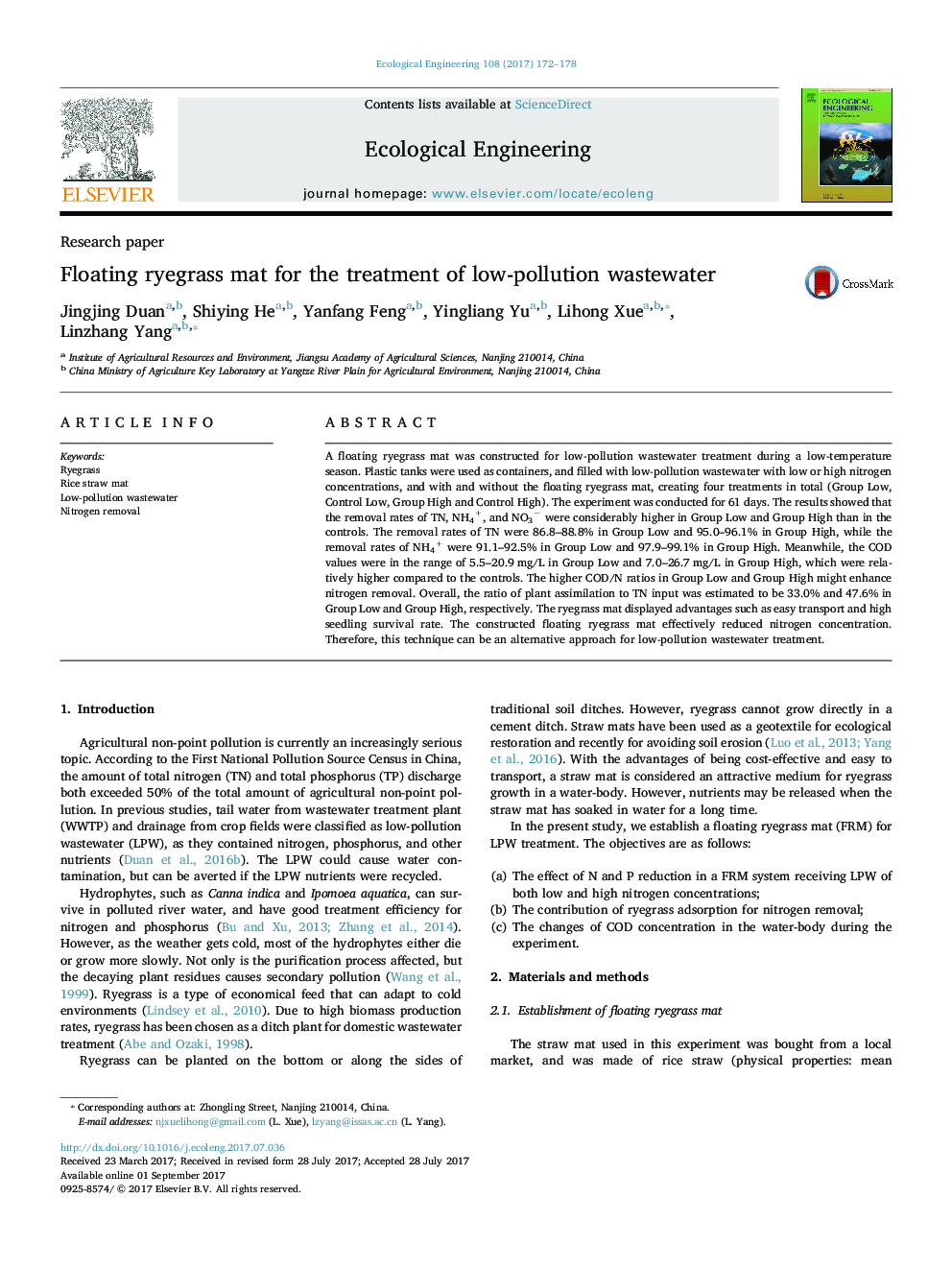| Article ID | Journal | Published Year | Pages | File Type |
|---|---|---|---|---|
| 5743530 | Ecological Engineering | 2017 | 7 Pages |
A floating ryegrass mat was constructed for low-pollution wastewater treatment during a low-temperature season. Plastic tanks were used as containers, and filled with low-pollution wastewater with low or high nitrogen concentrations, and with and without the floating ryegrass mat, creating four treatments in total (Group Low, Control Low, Group High and Control High). The experiment was conducted for 61 days. The results showed that the removal rates of TN, NH4+, and NO3â were considerably higher in Group Low and Group High than in the controls. The removal rates of TN were 86.8-88.8% in Group Low and 95.0-96.1% in Group High, while the removal rates of NH4+ were 91.1-92.5% in Group Low and 97.9-99.1% in Group High. Meanwhile, the COD values were in the range of 5.5-20.9Â mg/L in Group Low and 7.0-26.7Â mg/L in Group High, which were relatively higher compared to the controls. The higher COD/N ratios in Group Low and Group High might enhance nitrogen removal. Overall, the ratio of plant assimilation to TN input was estimated to be 33.0% and 47.6% in Group Low and Group High, respectively. The ryegrass mat displayed advantages such as easy transport and high seedling survival rate. The constructed floating ryegrass mat effectively reduced nitrogen concentration. Therefore, this technique can be an alternative approach for low-pollution wastewater treatment.
